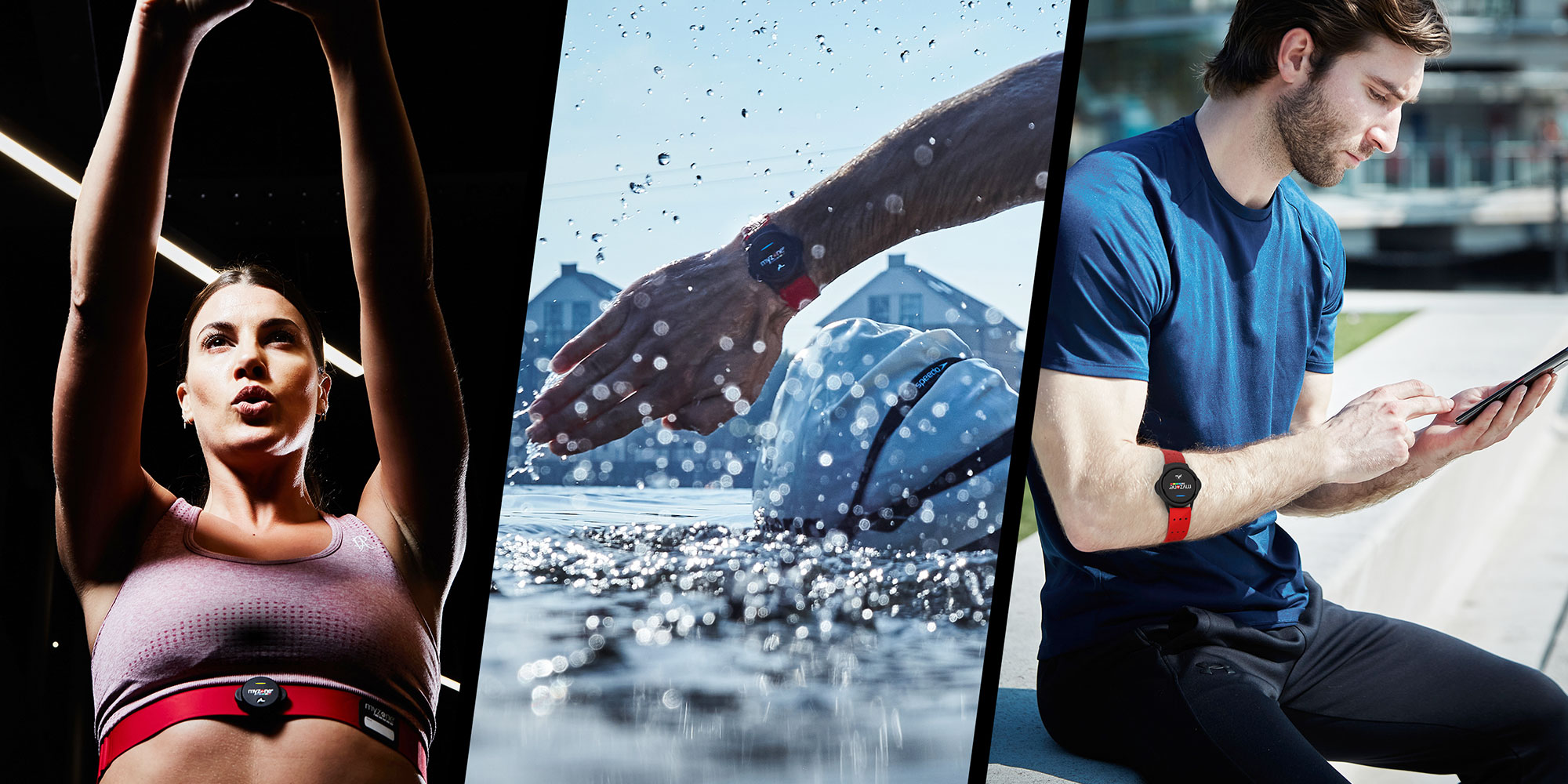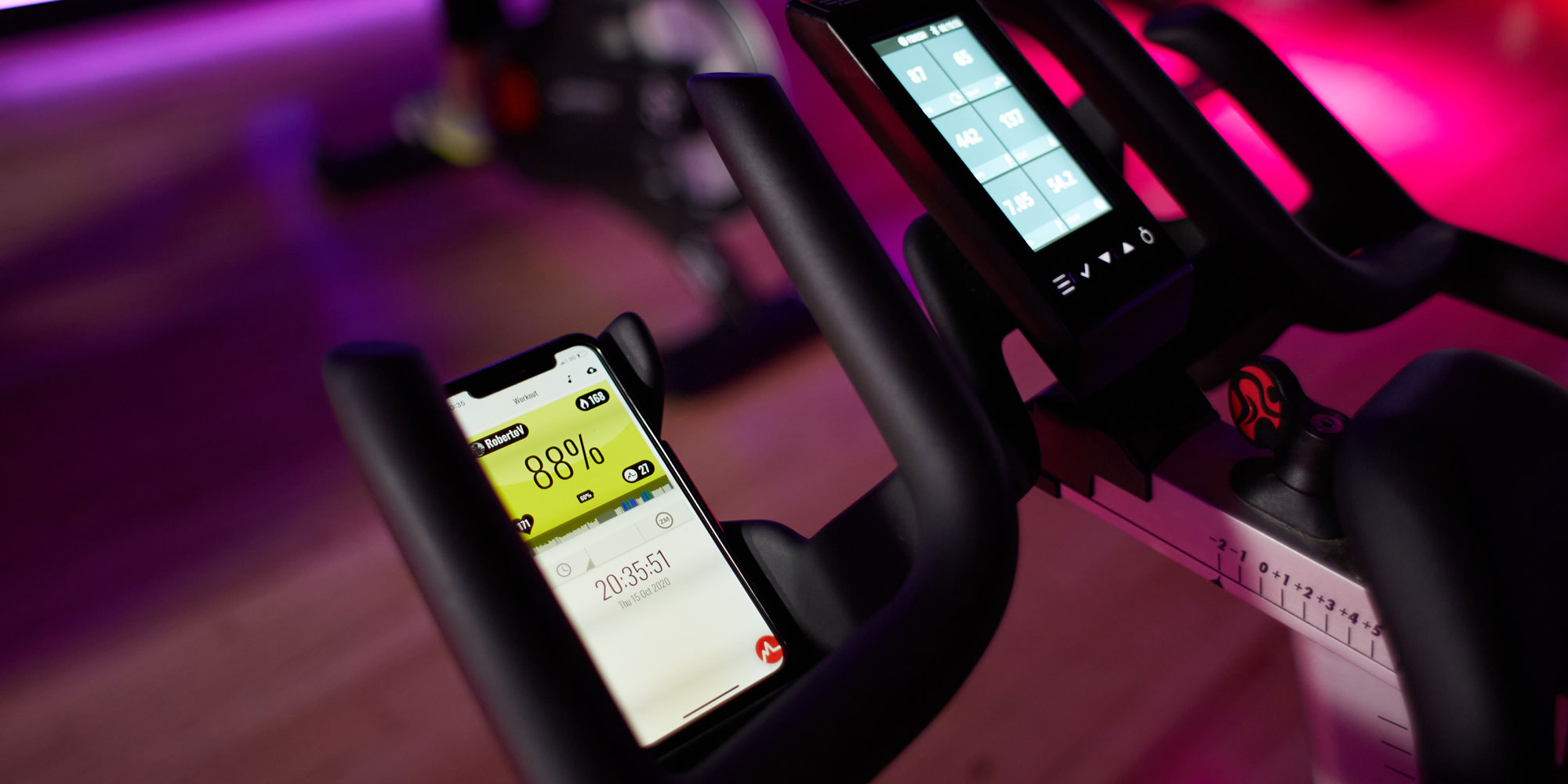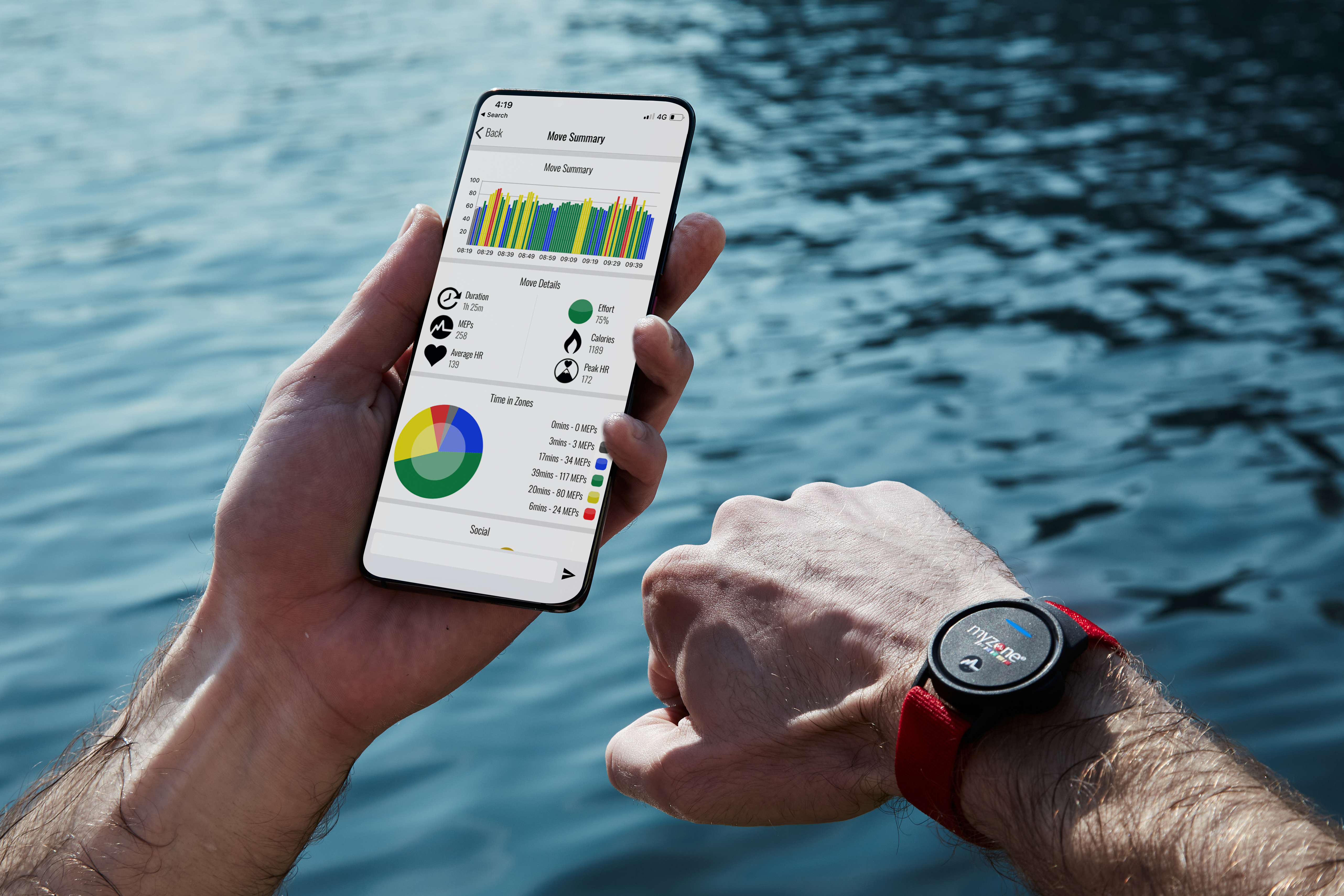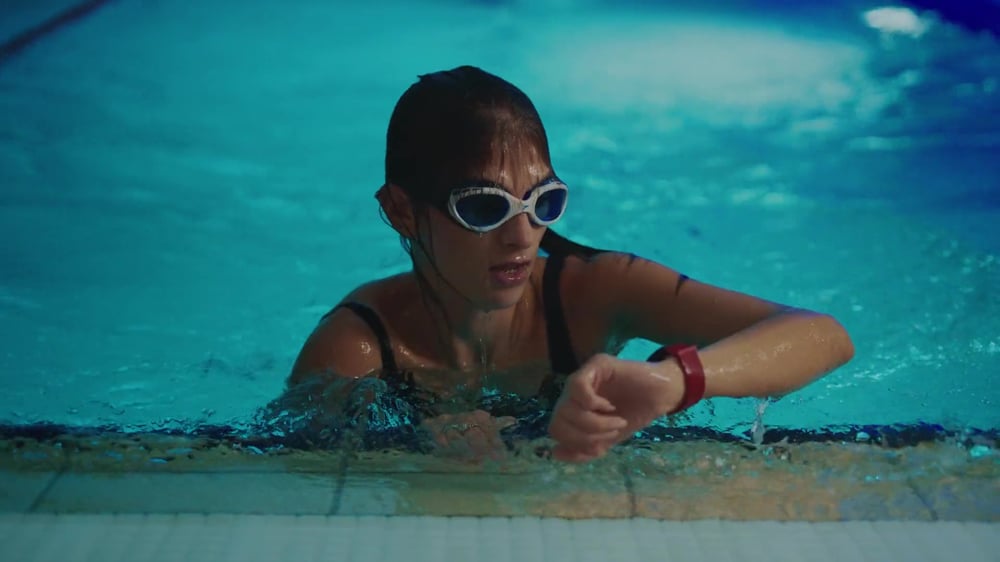Take water workouts to the next level with MZ-Switch
MZ-Switch is a game-changer for your water-based workouts. Thanks to its ability to offer both PPG (photoplethysmography) and ECG (electrocardiography) readings from one device, you can take heart rate training to the water. Whether you are swimming laps or working on your speed, taking part in aquatic classes or swimming in open water, you can now make the most of each workout.
No more guessing
With MZ-Switch there’s no need for your water-based workouts to plateau. Clipped into the wrist strap, MZ-Switch uses its optical sensor to track your heart rate from the moment you hit the water. With approximately 95% accuracy, the PPG sensor gives you extremely reliable data about how much effort you are putting into your workout, so you can see if you are working hard enough to reach your goals. Seeing that flash of colour on the LED strip as your wrist glides through the water (even underwater with your goggles on) helps to keep you motivated and accountable.
“I am very excited about the MZ-Switch because I do a lot of swimming in the summer, says Myzone user Kathy Yerk. “This will help me to track my MEPs even while I am swimming.”
MZ-Switch is water-resistant to a depth of 10 metres and has memory storage of 36 hours so there’s no need to worry about syncing when you're in the pool. It also has an impressive battery life of up to six months.
Understanding heart rate in the water
Swimming can burn the same number of calories as other popular cardio workouts like running - MZ-Switch tracks how many calories you have burned during your workout - but your heart rate behaves differently when exercising in water compared to land-based activities. Your heart rate may be significantly lower than during your other workouts. And this is completely normal.
Research published by the Department of Physical Performance, Norwegian School of Sport Sciences in 2019, showed that elite swimmers had lower maximum heart rates when swimming compared to running and cycling.
Several studies have tried to explain why this might be the case. One possible reason, say researchers, could be that swimming is done horizontally, which can reduce blood flow to the lower extremities and therefore can lower your heart rate. Buoyancy in the water also compensates for gravity meaning that only minimal muscle mass is needed to support your body, preventing the activation of large muscle mass in the lower extremities when compared to running. This can mean less effort for your heart. The cooler temperatures of water can also reduce your heart rate.
.jpg?width=1000&name=TQ6A9840%20(1).jpg)
“I used to do triathlons and I enjoy swimming, so now I can use it while I am in the water,” says Wendee Brungard. “Having an MZ-Switch will make my swim workouts trackable and it is kind of motivating me to do a triathlon after five years”.
If you’re planning a triathlon like Wendee, remember not to compare your heart rate while you are swimming with your run or cycle. Just accept they will be different and that you are still getting a fantastic workout with MZ-Switch tracking your fitness journey in three different ways.
No more training alone
One of the things that Myzone movers love about the technology is the feeling of belonging to a community. For most people, swimming is a solitary activity, but MZ-Switch brings swimmers into the wider Myzone tribe for the first time.
Being able to share your aquatic workouts, liking and commenting on other people’s workouts not only helps you feel connected, it’s also hugely motivating.
Swimming offers a great cardio and resistance workout and is one of the few activities that work your entire body. With MZ-Switch on your wrist, you have the tools to exercise more efficiently in the water to reach your fitness goals faster.
Experience inclusive community fitness, however it suits you. Click here to shop the products in the story.
Share this
You May Also Like
These Related Stories

MZ-Switch – where you wear your heart rate monitor matters

Where's my workout? (Gym edition)




